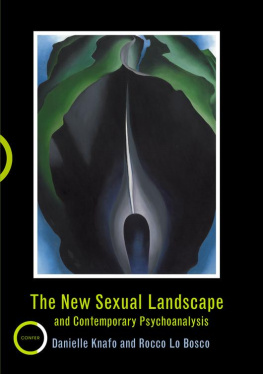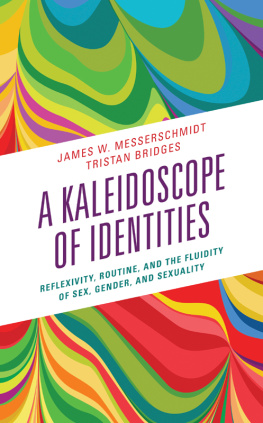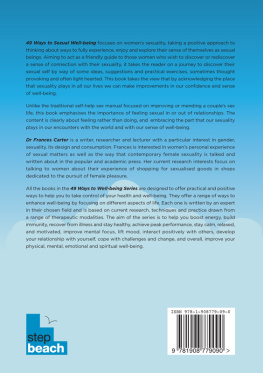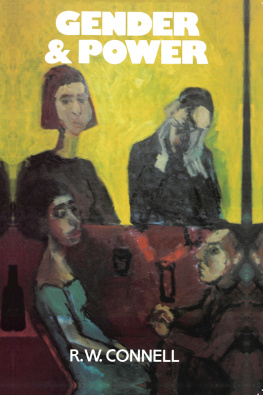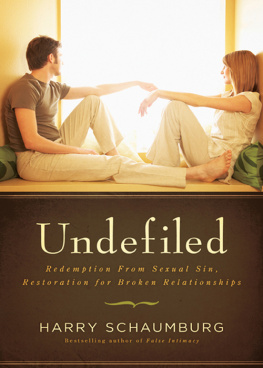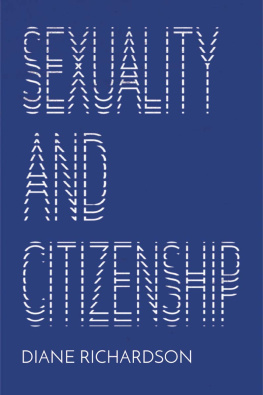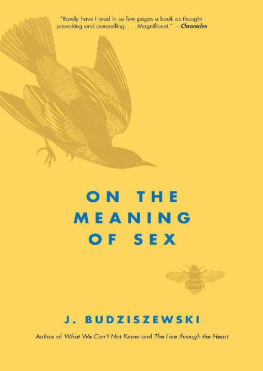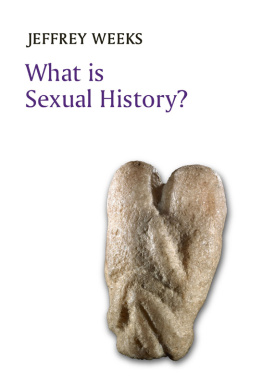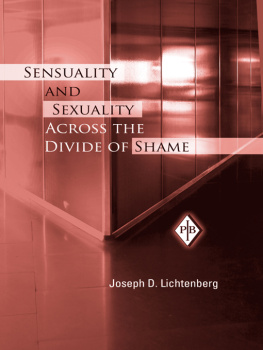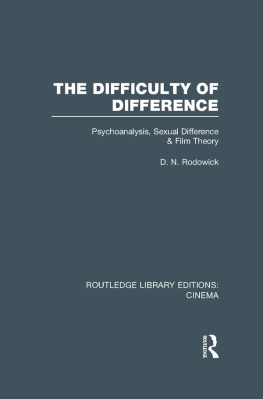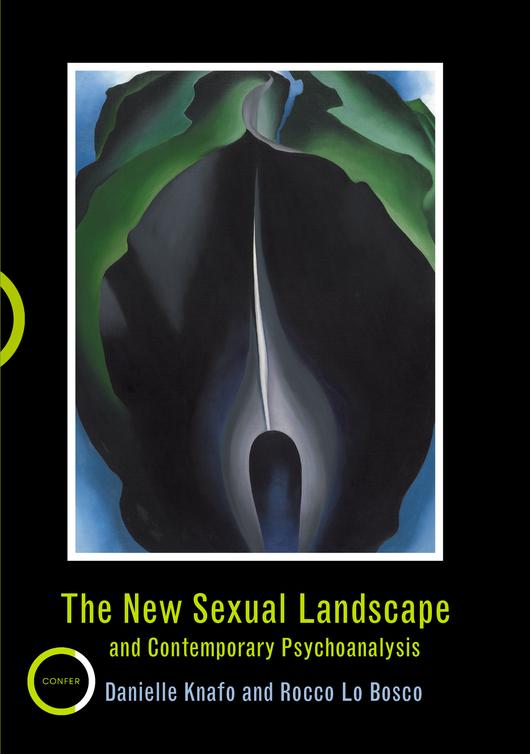First and foremost, as always we give sincere thanks to Maryellen Lo Bosco for her exceptional editing. We are also very grateful for the extensive help Roee Meyer and William Rung offered throughout the process of our writing and editing the manuscript. They provided an invaluable lens through which the younger generations view changing concepts about gender and sexuality. We are also grateful for the help they gave us with the references and index.
Rod Tweedy was always available to answer questions and provide guidance and encouragement, as was Brett Kahr. In her editorial capacity, Julie Bennett put the final touches on the manuscript and was a pleasure to interact with.
We are happy to be part of the new venture called Confer Books.
You cant experience the taste of heaven with your clothes on.
Patient X
Once while administering the Rorschach Test to a young male millennial, Dr Knafo listened closely to his florid descriptions of the many beautiful things he saw in the ink blots blooming gardens, billowing cumulus clouds, sparkling fountains, beautiful butterflies, and so forth. Though suspicious of the benignity of his projections, she withheld comment. As the patient turned to leave, he looked back at her and said, Can I ask you a question?
Of course, she replied.
Why did you show me all those dirty pictures?
Later he confessed he had seen human and animal genitals, both alone and engaged in sexual acts, in all ten cards. This patients telling moment illustrates the universal conflict about human sexuality. The pictures are dirty, the patient says. But if they depict only genitals and sexual acts, why are they dirty? Perhaps he thinks so because they are both animal and erotic acts, fraught with longing, conflict, anxiety, secrets, and dread of weakness and vulnerability. Sex is not simply what we do; it is what we mean. Moreover, the motives behind our sexual acts are too numerous and nuanced to be fully understood and certainly more than can ever be remembered. Psychoanalysis has taught us that erotic lives are informed by our earliest relationships with caregivers, siblings, and even friends, especially the hidden aspects the stuff under the table, as one of Dr Knafos patients described it.
Sex is hush-hush, in that it keeps itself in the form of secrets remembered, secrets forgotten, and secrets that occur before memories can even be formed virtual secrets. The closed doors behind which sex usually takes place are first found in the human psyche. Discussion about sex often creates discomfort. When the topic is introduced to a young person, it is frequently sanitised as the facts of life, the talk, or the birds and the bees, or explained in a film on sexual biology. To think I began as a gooey inseminated piece of slime and was born an inch north of an anus! The insult begins with conception! That alone is enough to hate my parents, shouted one of Dr Knafos patients in a fit of existential rage.
And even when people talk about sex, they rarely speak from the heart and the gut. Can we admit to another in a heartfelt manner our strongest desires and excitements, how they are often linked to the most forbidden enactments, and how, at its hottest, the best sex goes off like a bomb we are unaware of but carry within? (I did things I never thought I could do! Not just sexual things, other things too ) How do we tell one another that behind the mask of our past and culture is often a frustrated dirty animal who might risk an entire life and reputation for a few moments of sexual bliss? Some contemporary examples may come to mind: Bill Clinton, Arnold Schwarzenegger, Tiger Woods, and David Petraeus, to mention a few. How do we speak about fantasies, urges, and acts that would shame us to share? (I am a six-foot, 200-pound macho man who fantasises about wearing female lingerie while romping among naked transgender people. Let me tell you exactly how it feels to think about this, what I do when I think about it, and what it might feel like to do it. Would I do it? Would I? No. Well maybe. I dont know. It depends.)
Where does such a dialogue fit within the ambit of contemporary culture? Where does it fit within psychoanalysis? We speak as persons, not animals, often consciously cut off from what our bodies are saying to one another, naturally cloaked in the language and symbols of our civilisation, which aims to banish the animal reeking of naked desperation wild, unpredictable, dirty, and stained by aging and death. We are that cunningly clever animal that escapes itself by immersion in a symbolic world of meaning that seems to transcend the body.
On rare occasions, when adults attempt to speak openly about sex, their body language and tone of voice change remarkably, so that even if an observer did not understand the language they were speaking, that person would most likely know sex was the topic of discussion. The signs of risky conspiratorial camaraderie would be evident: the sly grin, the nervous laughter, the alert absorption keenly monitoring oneself and others reactions. Heads might lean towards each other if things are going well. Or perhaps some in the group might look uncomfortable, embarrassed, or slightly confused. For most people, sex is a subject they dont clearly understand, even if they are much preoccupied with it, consciously or unconsciously. Sex may sometimes seem as if it has a mind, life, and language all its own. Clearly, sex, like death, is a problem for all human beings. While some cultures are sexually liberated, and every sexual revolution expands the way we view and judge sexuality, they all ultimately fail because the chthonic, chaotic, and irrational core of human sexuality escapes definitive capture by any theory. Therefore, we often find ourselves speaking of the mystery of sex. As Sagan and Druyan (1992) aptly noted, the nearly maniacal devotion to sex and love exhibited by plants, animals, and microbes is pervasive. It cries out for explanation. What is all this in aid of? What is the torrent of passion and obsession about? Why will organisms go without sleep, without food, gladly put themselves in mortal danger for sex? (p. 143).
Such obsession is evident in todays sexually saturated culture, where one in six internet visits is to a porn site (Anthony, 2012). Yet, over the last twenty-five years, initiation of sexual intercourse among young people is beginning at later ages. Specifically, the number of American high school students having sex dropped from 54% to 40% between 1991 and 2017, and both young people and baby boomers are having less sex than previous generations did at the same age (Julian, 2018). A major British study found that couples report having less sex than they did ten years ago (Wellings & Johnson, 2013).
Sex seems to become even more thorny the more scientists and social scientists learn. For example, some are now claiming that psychoanalytic theory hides from the primacy of sex, neglecting it in favour of attachment and relational concerns (Fonagy, 2006; Green, 1995). Adding to the growing complexity of the sex picture is peoples airing of dirty laundry long consigned to the hampers of cultural discretion: for example, the pervasive harassment and abuse, mostly of women, revealed by the Me Too movement and the ongoing revelations of widespread sexual abuse and rape, primarily of children, by Catholic clergy. The cover-ups of the Catholic Church are a little ironic, considering that official Church dogma deems birth control to be a sin. Meanwhile, religion and right-wing politics are being used to step up repressive attacks on abortion rights and the lifestyles of the LGBTQ+ community. On a more quotidian level, sexual dysfunction continues to be common in marriage and long-term relationships. Perhaps it is too early to hoist the flag of victory over repression, and perhaps psychoanalysis needs to return to its founding concern with sexuality.

